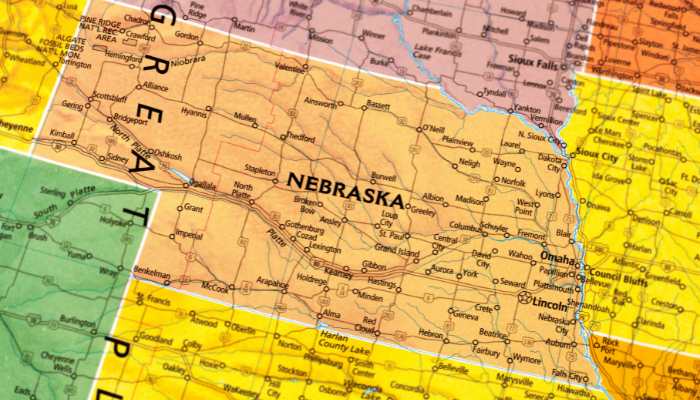Nebraska is a state with a long agricultural history.
The first farmers in the state were the Native Americans who cultivated the land for centuries before the arrival of European settlers.
Today, Nebraska is one of the leading agricultural states in the country, producing a variety of crops and livestock.
The state’s diverse climate and geography allow for a wide range of crops to be grown.
Corn is the most prevalent crop, followed by soybeans, wheat, and sorghum.
Plant Hardiness Zone Map
The below map shows the US Plant Hardiness Zone Map of the state.
Plant Hardiness Zone Map for Nebraska

Climate
Nebraska has a humid continental type of climate in the east and semi-arid in the west. Summers are hot and humid, while winters are cold and icy.
In summer, high temperatures average 85-90°F range at the peak of July.
Temperatures cross 100°F statewide and record as high as 115°F at the height of summer.
Whereas in winters, the average low temperatures in the 10-20°F range in January.
Temperatures routinely drop below 0°F in the majority of the state during the cold season.
Precipitation
The average rainfall in Nebraska is a moderate 25 inches and varies from 32 inches in the east to 14 inches in the west and panhandle.
Snowfall ranges from 21 inches in the south to 45 inches in the northwest and lasts from as early as October to late as April.
Soil Type
Before moving to the soil orders, let us see the ecoregions of the state.

Now, let us discuss the soil orders present in the state of Nebraska.
Soil Order Of Nebraska
| Soil / Sub Order | Location | Characteristics |
|---|---|---|
| Entisols/Psamments, Orthents and Fluvents | Psamments majorly in the sandhills, Orthents in the central Loess plains and high plains, and Fluvents in some parts of central Loess plains and Loess hills. | 1. Psamments are sandy soils. 2. Orthents are found on recent erosional surfaces. 3. Fluvents are the more or less freely drained Entisols that formed in recent water-deposited sediments. |
| Inceptisols/Ustepts and Aquepts | Ustepts in the Shale plains and high plains while Aquepts in the high plains. | 1. Ustepts are freely drained Inceptisols that have a ustic moisture regime. 2. Aquepts are wet Inceptisols. |
| Vertisols/Usterts | On the northwestern side of high plains | 1. Usterts receive low amounts of rainfall during the summer and crack open and close once or twice during normal years. They have low saturated hydraulic conductivity. |

